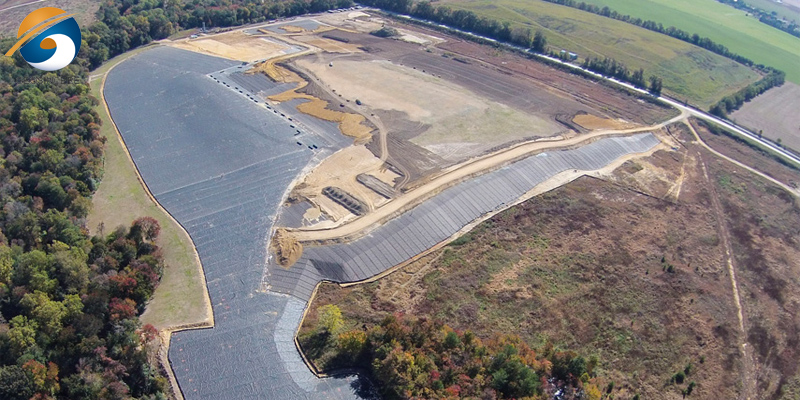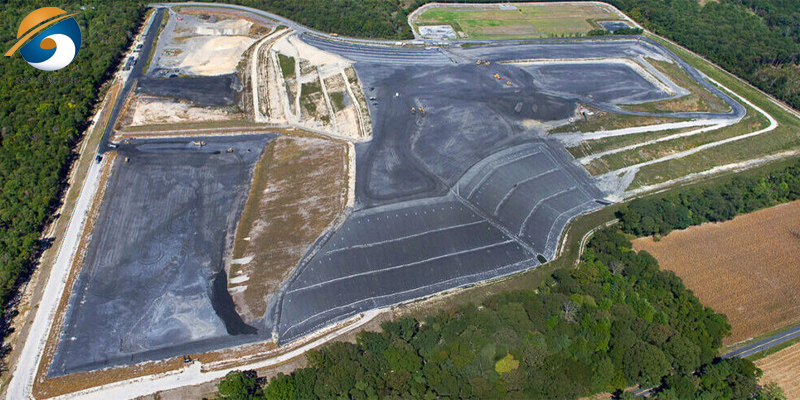What ls Geo Membrane for Gold Mining? - A Comprehensive Guide
Gold mining is a complex and resource-intensive industry that demands innovative solutions to balance productivity, environmental protection, and regulatory compliance. Among the critical technologies enabling sustainable gold extraction, geo membranes have emerged as a cornerstone for modern mining operations. This guide explores the role of geo membranes in gold mining, their applications, material considerations, and how **Shandong Geosino New Material Co., Ltd. delivers tailored solutions backed by 18 years of expertise.
1. The Critical Role of Geo Membranes in Gold Mining
Geo membranes, also known as geomembranes, are impermeable synthetic liners made from polymers like High-Density Polyethylene (HDPE), Linear Low-Density Polyethylene (LLDPE), or Polyvinyl Chloride (PVC). In gold mining, they serve as engineered barriers to:
- Contain hazardous chemicals (e.g., cyanide, sulfuric acid) used in leaching processes.
- Prevent groundwater contamination from tailings and waste materials.
-Enhance operational efficiency by optimizing heap leaching and evaporation ponds.
Without reliable containment systems, mining operations risk environmental disasters, regulatory penalties, and reputational damage.
2. Key Applications of Geo Membranes in Gold Mining
2.1. Heap Leaching Pads
Heap leaching is a cost-effective method to extract gold from low-grade ores. A typical heap leach pad involves stacking crushed ore into large piles and irrigating it with a cyanide or sulfuric acid solution to dissolve gold. Geo membranes here act as:
- Primary liners: Prevent leaching fluids from seeping into the soil.
- Secondary liners: Serve as a backup layer in case the primary liner fails.
- Slope stabilization: Reinforce steep slopes to prevent erosion.
Material Choice: HDPE (1.5–2.5 mm thickness) is preferred due to its resistance to aggressive chemicals and UV degradation.
2.2. Tailings Storage Facilities (TSFs)
Tailings—a slurry of water, crushed rock, and residual chemicals—are stored in large dams. Geo membranes in TSFs:
- Isolate toxic waste from surrounding ecosystems.
- Reduce seepage to maintain dam structural integrity.
- Minimize water loss through evaporation control.
Design Tip: A composite liner system (geo membrane + compacted clay or geosynthetic clay liner) is often recommended for TSFs.
2.3 Process Ponds and Evaporation Basins
These structures manage water used in gold extraction. Geo membranes ensure:
- Zero leakage of process water contaminated with heavy metals.
- Efficient evaporation by reflecting sunlight (white-surfaced LLDPE membranes are ideal).
2.4. Cyanide Detoxification Areas
Cyanide, a common gold solvent, requires careful handling. Geo membranes line detoxification tanks to:
- Contain spills during neutralization processes.
- Facilitate safe disposal of treated waste.
3. Choosing the Right Geo Membrane: Material and Design Considerations
3.1. Material Selection
- HDPE: Best for chemical resistance (pH 1–14) and long-term durability (50+ years). Suitable for heap leach pads and TSFs.
- LLDPE: More flexible than HDPE, ideal for uneven subgrades or cold climates.
- PVC: Cost-effective for short-term projects but less resistant to UV and chemicals.
3.2 Thickness and Strength
- 1.5–2.0 mm: Suitable for secondary containment or low-risk applications.
- 2.0–3.0 mm: Recommended for primary liners in high-stress environments (e.g., heavy machinery zones).
3.3. Chemical Compatibility
Gold mining involves harsh chemicals:
- Cyanide solutions* Require HDPE with antioxidant additives.
- Sulfuric acid: HDPE’s inert nature resists corrosion at concentrations up to 50%.
- High-salinity fluids: Use LLDPE with enhanced oxidative stability.
Always conduct chemical immersion tests (ASTM D5322/D5496) before finalizing material.
3.4. UV and Temperature Resistance
In open-air applications (e.g., heap leach pads), geo membranes must withstand:
- UV radiation: HDPE with 2–3% carbon black content offers superior UV stability.
- Extreme temperatures: LLDPE performs better in sub-zero conditions, while HDPE handles high heat.
3.5. Seaming and Installation
Over 80% of liner failures originate from poor seams. Key practices include:
- Dual-hot wedge welding: Creates robust, airtight seams for HDPE.
- Extrusion welding: Repairs complex geometries or damaged areas.
- Non-destructive testing: Use spark testing or air lance methods to verify seam integrity.
4. Shandong Geosino’s Expertise in Gold Mining Solutions
With 18 years of experience and a team of engineers boasting 20+ years in geosynthetics, Shandong Geosino New Material Co., Ltd. provides end-to-end solutions for gold mining projects:
4.1. Tailored Engineering Support
- Site-Specific Design: Our engineers analyze ore composition, climate, and topography to recommend optimal liner specifications.
- Leak Detection Systems: Integrate Electrical Leak Location (ELL) surveys during installation to ensure zero defects.
- 3D Modeling: Simulate fluid dynamics in heap leach pads to prevent liner stress.
4.2. One-Stop Procurement
We supply a full range of geosynthetics:
- HDPE/LLDPE geo membranes (1.5–3.0 mm).
- Nonwoven geotextiles for cushioning and drainage.
- Geonets and GCLs for composite lining systems.
4.3. Sustainable Innovations
- Recycled HDPE: Eco-friendly liners made from post-industrial resin, reducing carbon footprint.
- Solar-Ready Liners: Reflective surfaces to enhance evaporation efficiency in arid regions.
4.4. Global Case Study: Securing a Gold Mine in Ghana
A large-scale mine in Ghana faced cyanide leakage risks due to unstable subgrade. Geosino’s solution included:
- 2.5 mm HDPE liner with high oxidative induction time (OIT >100 min).
- Geotextile underlayment to prevent puncture from sharp rocks.
- On-site welding training for local contractors.
Post-installation ELL surveys confirmed a leakage rate of <0.1 L/ha/day, surpassing industry standards.
5. Frequently Asked Questions
Q1: How long does an HDPE geo membrane last in gold mining applications?
A1: Properly installed HDPE liners can last 50+ years, even in acidic environments. Regular inspections (every 5 years) are recommended to address wear.
Q2: Can geo membranes be repaired if damaged?
A2: Yes! Extrusion welding or patching kits can fix punctures. Geosino provides emergency repair guides and on-call support.
Q3: What’s the lead time for custom orders?
A3: We deliver within 15–30 days for orders up to 500,000 m², with expedited options for urgent projects.
6.Conclusion: Partner with Geosino for Safer, Smarter Gold Mining
Geo membranes are not just a regulatory requirement—they are a strategic investment in environmental stewardship and operational efficiency. By choosing Shandong Geosino, you gain access to:
- Decades of technical expertise.
- Cost-optimized, compliant solutions.
- 360° support from design to decommissioning.
For a customized quote or technical consultation, contact our senior sales department Jennifer at jennifer@geosyntheticscn.com. Let’s build a sustainable future for gold mining together.
7. About Shandong Geosino New Material Co., Ltd.
Founded in 2005, Shandong Geosino specializes in high-performance geosynthetics for mining, environmental, and civil engineering sectors. With ISO 9001, GRI-GM13, and CE certifications, we serve clients in 100+ countries. Explore our innovations at [www.geosyntheticscn.com]








